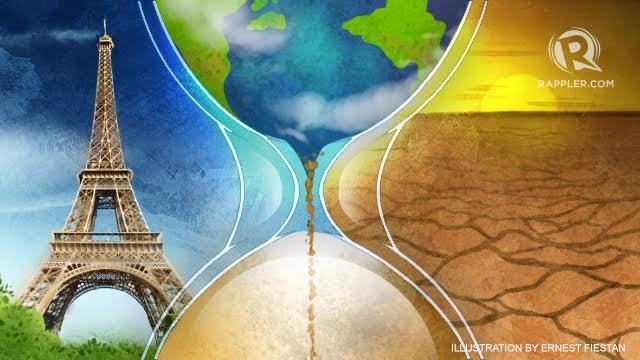SUMMARY
This is AI generated summarization, which may have errors. For context, always refer to the full article.
 December 2015 marks a pivotal moment for the United Nations Framework Convention for Climate Change. The Conference of Parties (COP), under which 198 countries are signatories, will try to forge a climate agreement trying to lower global warming below 2 degrees centigrade, while addressing solutions for climate adaptation.
December 2015 marks a pivotal moment for the United Nations Framework Convention for Climate Change. The Conference of Parties (COP), under which 198 countries are signatories, will try to forge a climate agreement trying to lower global warming below 2 degrees centigrade, while addressing solutions for climate adaptation.
A failed climate agreement in 2009 in Copenhagen, Denmark puts a lot of pressure for world leaders to agree on a fair and binding climate agreement this year. (READ: What’s happening in the Paris climate deal?)
The world’s most vulnerable sectors have been experiencing the impacts of climate change — droughts, slow-onset impacts, extreme weather events, and stronger typhoons like Typhoon Yolanda (Haiyan) in 2013 are all extrinsically linked to climate change.
No less than the Intergovernmental Panel on Climate Change said in a 2014 report that “the effects of climate change are already occurring on all continents and across the oceans.” Furthermore, the report also stated that the world is “ill-prepared for risks from a changing climate.”
The Paris climate agreement is down to its last 5 negotiating days with the Ad Hoc Working Group on the Durban Platform for Enhanced Action (ADP) holding another week on October. The recently concluded ADP Session last week in Bonn, Germany showed a rather snail-pace tempo toward reaching a deal in December, a forewarning of things to come.
Julie-Anne Richards of the Australia-based Climate Justice Programme, however, said that last week’s ADP 2 sessions also have a few wins. For example, big emitters like Australia, the United States, and to a certain extent the European Union, acknowledged the importance of loss and damage. Whether this will come into concrete and tangible commitments is another matter.
5-year cycle

If world leaders will be able to come up with a strong and definitive climate agreement come December, countries must be able to commit to ambitious goals and be able to review, make amendments, and set new targets accordingly. (READ: Setting a clear direction for the climate deal)
One thing that can guarantee the sustainability of the Paris deal is the so-called 5-year cycle of reporting. According to Jennifer Morgan, a climate expert and one of the authors of the Agreement on Climate Transformation 2015 report, the 5-year cycles are intended to “counter-balance to the gap in multilateral rules and norms and update the commitments regularly through 5-year cycles of continuous improvement.”
Furthermore, she said that this will “encourage countries to continuously ratchet up their commitment in regular, short-term (5-year) intervals.” This includes mitigation, adaptation and support.
International non-profit Business for Social Responsibility said that the 5-year cycle is better than the 10-year cycle because a 10-year cycle undermines the robust growth of low-carbon investment, technological innovation and changes in production and consumption patterns.
Without the 5-year cycle, there might be a tendency for countries to lax on its climate commitments and underestimate the rapidly growing effects of climate change, which is intrinsically linked to economic growth (carbon emissions, technology) and social inequalities (adaptive capacity, finance).
The 5-year cycle has been brought up during the Bonn climate talks in June. However, last week’s intersession seemed to be an indication of the rather cold reception to this provision. Whether this provision will be adopted in the draft text remains to be seen.
Extreme weather events, slow-onset impacts, rising sea levels, heat waves, climate refugees, and rising temperature — these are the things that world leaders and climate negotiators must consider when they go back to the negotiations table in Bonn come October. They must also consider all these when trying to come up with a binding and universal climate deal at Paris in December.
The road to Paris started in Copenhagen in 2009 or to a certain extent, even during the Kyoto Protocol in 1997. Paris, however, is only the beginning as countries need to be constantly reviewing action plans and setting ambitious targets every 5 years to keep up with the phase of climate change. Otherwise, a successful Paris climate agreement in December will have no purpose. — Rappler.com
Jed Alegado is an incoming graduate student of Erasmus University Rotterdam – International Institute of Social Studies (EUR-ISS) in The Hague, Netherlands. He holds a masters degree in Public Management from the Ateneo School of Government. He is also a Climate Tracker for the Adopt a Negotiator Project.
Add a comment
How does this make you feel?
There are no comments yet. Add your comment to start the conversation.